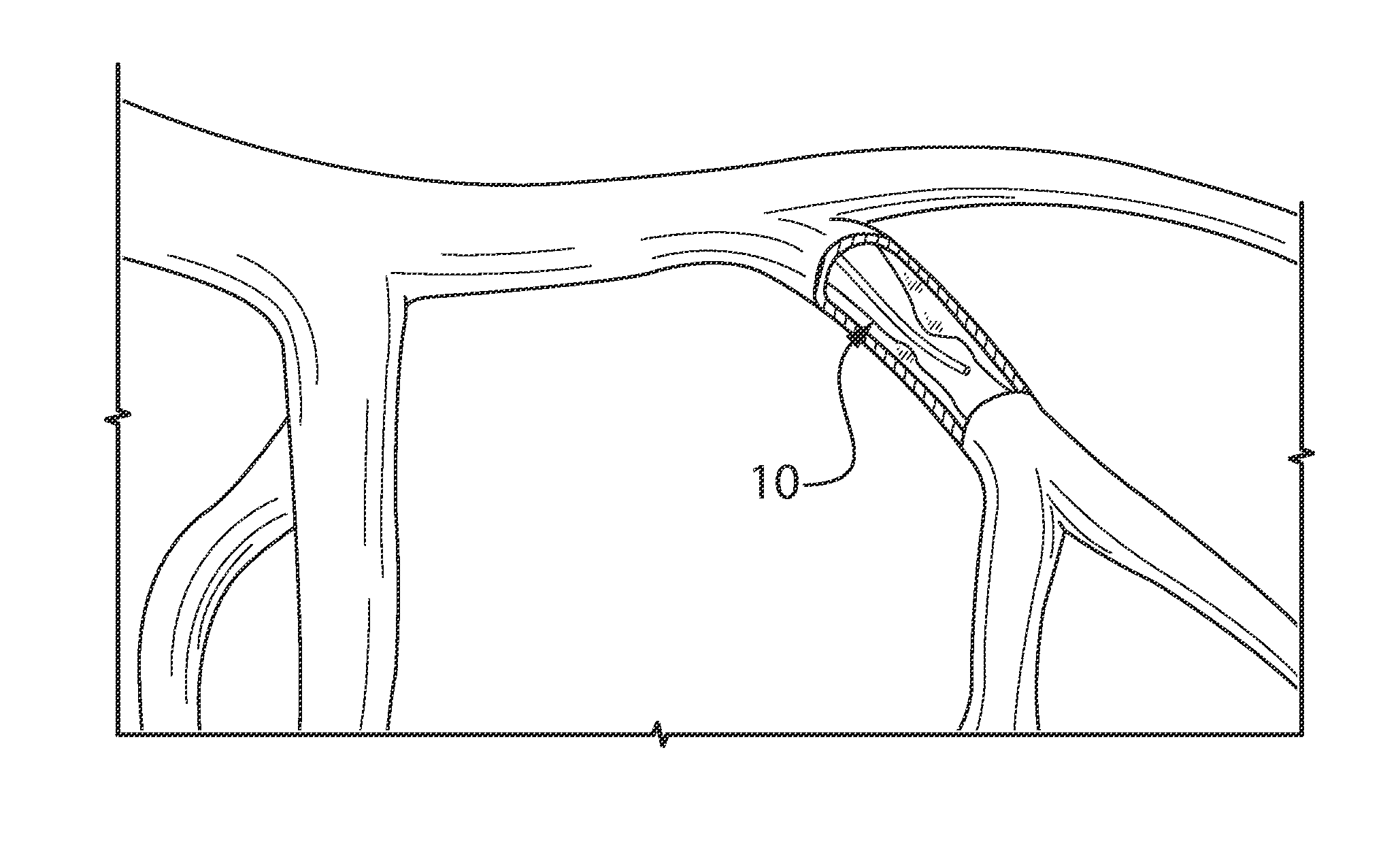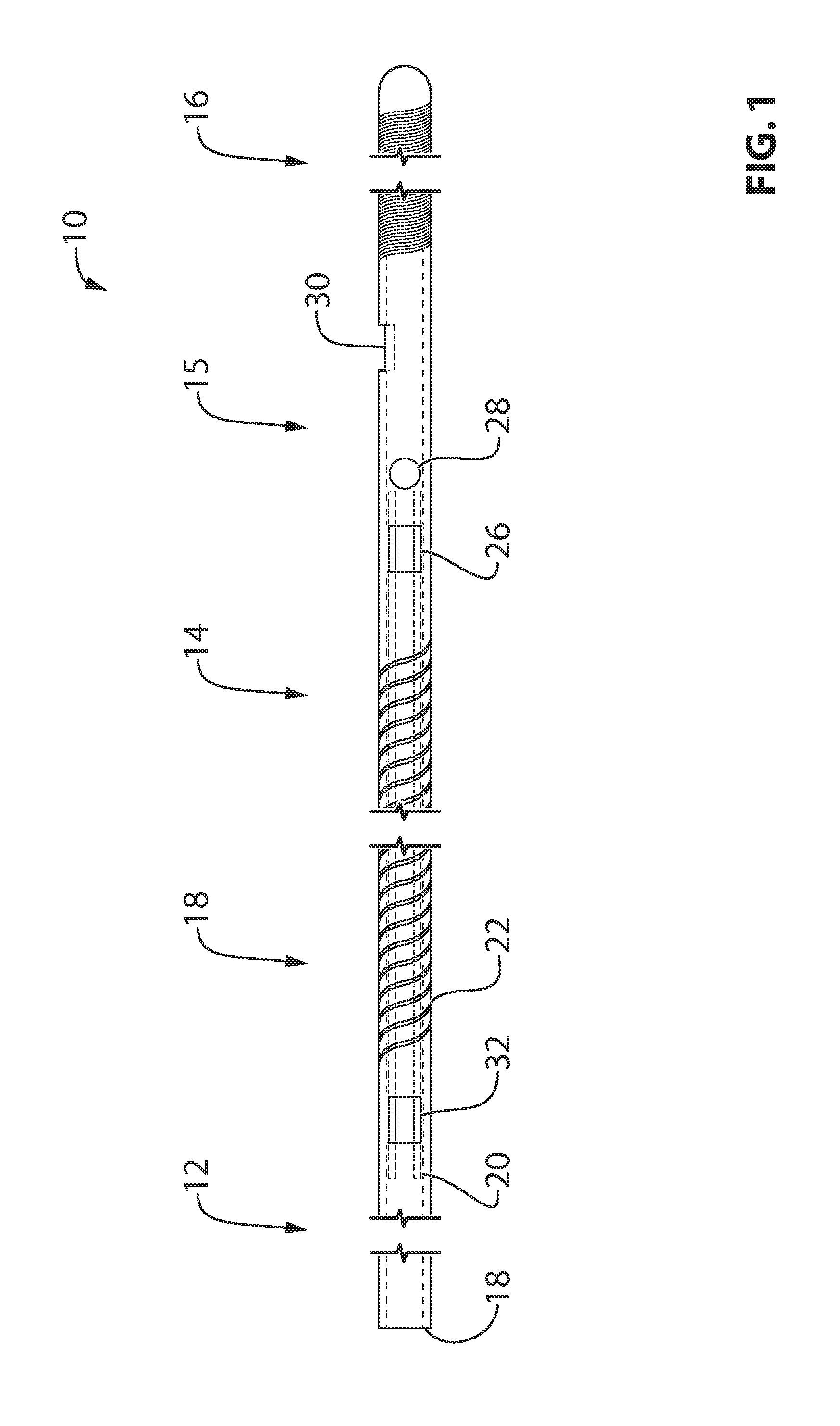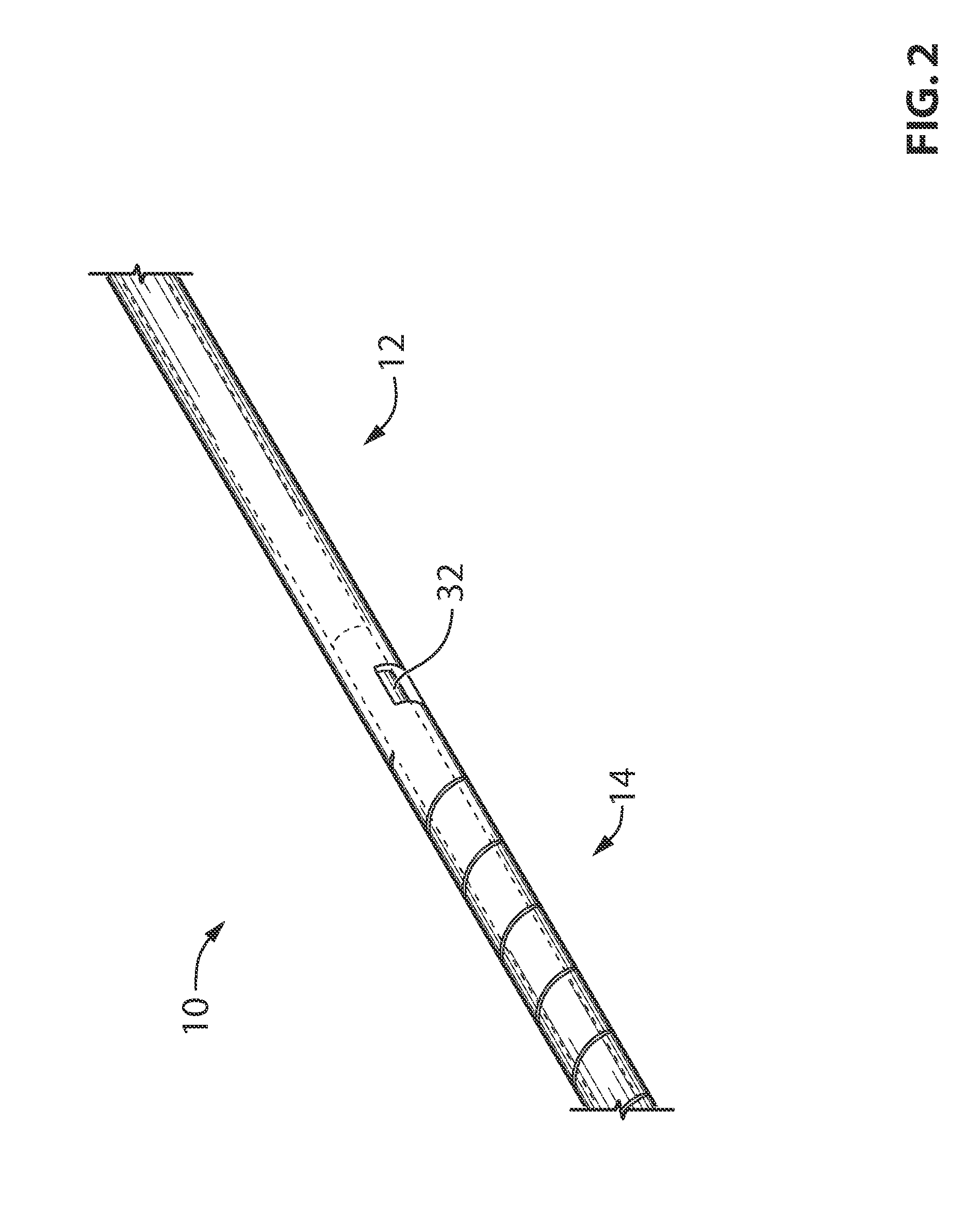Guidewire with internal pressure sensor
a technology of pressure sensor and guidewire, which is applied in the field of guidewires, can solve the problems of compromising the use of optimal solid core, difficult to weld nitinol to stainless steel, and high cost, and achieves the effect of optimizing mechanical performance and improving pushability
- Summary
- Abstract
- Description
- Claims
- Application Information
AI Technical Summary
Benefits of technology
Problems solved by technology
Method used
Image
Examples
Embodiment Construction
[0078]Referring now to the drawings, and more particularly to FIGS. 1 to 6, there is shown an embodiment of a pressure guidewire 10.
[0079]The general design for the pressure guidewire shown in FIG. 1 herein, although it is made of fewer parts than prior art pressure guidewires, it is also made of same four sections, namely, the proximal section 12, the middle section 14, the sensor housing section 15 and the tip section 16. Although, as it will become clear hereinafter, the first three sections 12, 14 and 15 are to some extent made of the continuity of the same shaft tube 18, the above sections of shaft tube 18 may also be called herein after as proximal section 12, middle section 14 and sensor housing section 15.
[0080]According to an embodiment, the proximal section 12 is made of a stainless steel hypotube, with an OD of about 0.014″ and by way of non limiting example with an ID of about 0.009″. The proximal section is used to push other more distal sections of the pressure guidewi...
PUM
| Property | Measurement | Unit |
|---|---|---|
| length | aaaaa | aaaaa |
| length | aaaaa | aaaaa |
| diameter | aaaaa | aaaaa |
Abstract
Description
Claims
Application Information
 Login to View More
Login to View More - R&D
- Intellectual Property
- Life Sciences
- Materials
- Tech Scout
- Unparalleled Data Quality
- Higher Quality Content
- 60% Fewer Hallucinations
Browse by: Latest US Patents, China's latest patents, Technical Efficacy Thesaurus, Application Domain, Technology Topic, Popular Technical Reports.
© 2025 PatSnap. All rights reserved.Legal|Privacy policy|Modern Slavery Act Transparency Statement|Sitemap|About US| Contact US: help@patsnap.com



